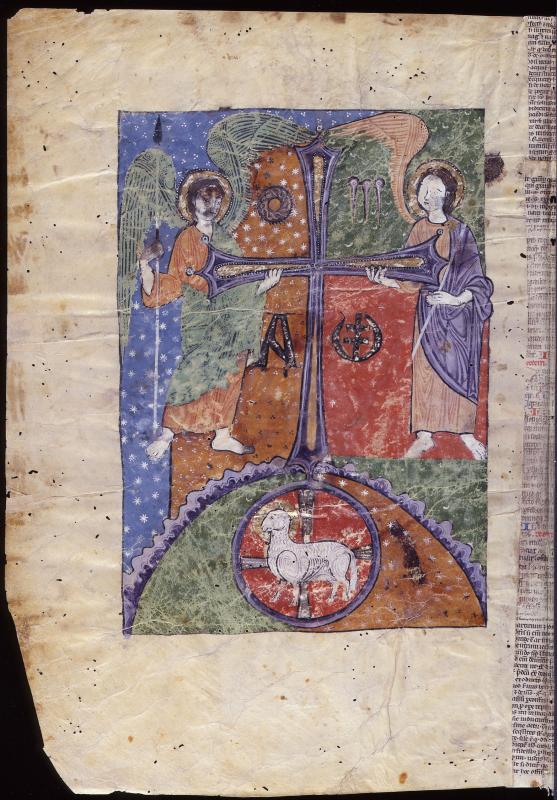
Saint Beatus, Presbyter of Liebana
-798
Commentary on the Apocalypse and commentary on the Book of Daniel
1220
Spain, perhaps Toledo
520 x 370 mm
MS M.429
Purchased by J. Pierpont Morgan (1837-1913) in 1910
Summary
Two angels, pearled nimbi, holding Instruments of Passion including spear, sponge on reed, cross of Oviedo flanked by crown of thorns and three nails, and Alpha and Omega. Below, in mount, medallion enclosing Lamb of God, pearled crossed nimbus, standing before cross; starred and decorated background.
Catalog link
